Sedna: Inuit Goddess Sacrificed By Selfish Father Fearing For His Own Life
A. Sutherland - AncientPages.com - Unlike American Indians, the Inuit people of Canada and Greenland have not in their cultural legacy many mythological stories from the time before the appearance of humans.
The Inuit people believed in the divinity of the sea and all the animals that dwelled in it. In many myths and legends of Arctic culture, Sedna is the highly honored deity and plays an important role, no matter the versions of her story and the diversity of her names given her by different Inuit groups.
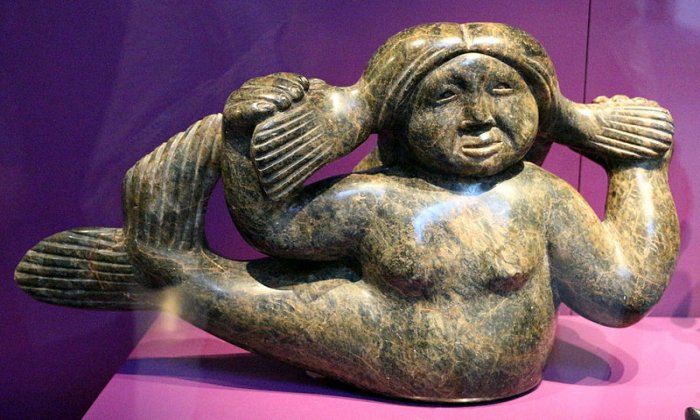 Sculptures in the National Museum of Finland. Image credit: Sailko - CC BY 3.0
Sculptures in the National Museum of Finland. Image credit: Sailko - CC BY 3.0
Her story was widely distributed in many versions across Canada and Greenland.
In Inuit mythology, Sedna is the daughter of two giants who lived a very long time ago at the beginning of the world. She is a great spirit-goddess also known as the Mother of the Sea or Mistress of the Sea, and the progenitor of all sea creatures. She rules over the sea world, controlling all sea mammals.
Her father, Anguta, created the earth, the sea, and the heavens, while Sedna populated the sea with animals, and so she became the most powerful force in Inuit life.
According to one legend, she was a beautiful maiden, that one day was carried off by a raven, which wanted her to be his bride. In another version, the raven is replaced by a handsome mysterious hunter with an outfit made of furs, and his face was mysteriously covered. Sedna’s father explained that the man wanted a wife his daughter would be a good and capable companion, capable of sewing and cooking. The mysterious man accepted and took Sedna in a boat to their new home, which as the man said, was located on a beautiful island full of huts and people. When they arrived she saw nothing except a few stones, a cliff, and loons. From now on her only food would be raw fish.
For the first time, the man exposed his face, and at that moment Sedna realized that he was a raven (in another version, he was a young loon), who could disguise himself whenever he wanted.
“I used my power to transform myself into a human after I fell in love with you,” said the young loon.
“Otherwise, you would not have come away with me.”
Unhappy to live on the island, after a few days, she began to scream and calling her father, hoping her voice would reach him one day. He finally arrived and took Sedna to her true home.
When Sedna’s loon-husband came home, he wanted to know where his wife was. “Her father came and took her away,” the birds cried. He quickly disguised himself as the human, jumped into his kayak to chase Sedna. In the meantime, after several hours on the sea, they spotted a bird flying in the distance, It was the spirit bird and at that moment, Sedna knew that her husband had found her, using another disguise.
Her father tried to drive him away with the oars but the ocean was becoming more violent, and the man failed. The spirit-bird was seeking revenge, and the old man knew he must appease the angry spirit. There was only one way to satisfy the creature – to throw his daughter overboard into the sea.
Once her father had made this horrible sacrifice, Sedna struggled to keep her head above the water as giant waves washed over her. For a moment she was able to grip the gunwales of her father’s kayak but the old man was so frightened that he cut away her half-frozen fingers.
When at last she was able to grip the gunwales of her father’s kayak, he was seized with fear. “I must do it,” he cried, “the spirit-bird makes the sea angry and demands your life.”
Sedna’s body slowly disappeared beneath the icy waters. Her fingertips became the small fishes and seals; her middle joints – the larger sea animals. Finally, her last joints became walruses and whales.
Her grief-stricken father returned home. The old man lay down on a thick pile of caribou hides inside the little tent, which was his and Sedna’s home for many years. During the night, giant waves of another storm reached the little tent where Sedna’s old father was sleeping. When the last powerful wave returned to the sea that night, it took the old man with it, down to Sedna’s home at the bottom of the sea.
Now, they together live at the bottom of the sea, and Sedna is a great spirit-goddess of the sea. She rules over the sea waters and all the animals that live there and is said to control the weather in the sea. Sedna has the power to either provide or destroy, and reigns over a vast realm where human souls, including her father’s, were imprisoned as punishment after death.
Far back in time, in case of impending hunger, the Arctic shamans often traveled across the sea and went into trance to come down to Adlivun, Sedna’s underwater home, and the Inuit underworld, to negotiate with the goddess and plead with her for food for people. Sometimes, Sedna was angry, denied their requests, and sent them back to the surface.
Next time, when she was in a good mood, she promised that hunters would have food for their families during the harsh winter seasons.
Written by – A. Sutherland - AncientPages.com Senior Staff Writer
Copyright © AncientPages.com All rights reserved. This material may not be published, broadcast, rewritten or redistributed in whole or part without the express written permission of AncientPages.com
More From Ancient Pages
-
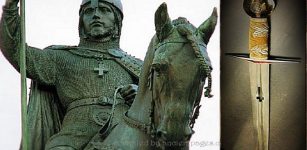 Prince Wenceslaus Of Bohemia Murdered On Order Of His Own Brother
Featured Stories | Nov 19, 2019
Prince Wenceslaus Of Bohemia Murdered On Order Of His Own Brother
Featured Stories | Nov 19, 2019 -
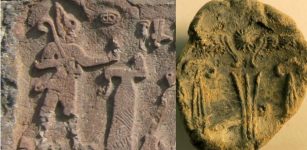 Ancient Clay Seals That Could Re-Write Hittite History Discovered In Kayalıpınar, Turkey
Archaeology | Sep 14, 2023
Ancient Clay Seals That Could Re-Write Hittite History Discovered In Kayalıpınar, Turkey
Archaeology | Sep 14, 2023 -
 Edfu Texts Reveal Secrets Of Predynastic Egypt And Zep Tepi
Featured Stories | May 27, 2021
Edfu Texts Reveal Secrets Of Predynastic Egypt And Zep Tepi
Featured Stories | May 27, 2021 -
 Ancient Secrets Of Sacred Lismore – Is There A ‘Second’ Iona In Scotland?
Archaeology | Jul 4, 2017
Ancient Secrets Of Sacred Lismore – Is There A ‘Second’ Iona In Scotland?
Archaeology | Jul 4, 2017 -
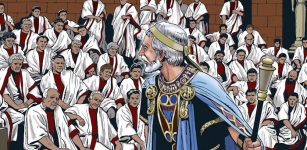 Roman Consuls Seized Power Through Intimidation, Bribery And Show Business
Ancient History Facts | Feb 24, 2021
Roman Consuls Seized Power Through Intimidation, Bribery And Show Business
Ancient History Facts | Feb 24, 2021 -
 The Kitchen God In Ancient Vietnamese Tradition Is Still Alive
Featured Stories | Feb 23, 2016
The Kitchen God In Ancient Vietnamese Tradition Is Still Alive
Featured Stories | Feb 23, 2016 -
 Colosseum-Like Structure Unearthed In 2700-Year-Old Ancient City Of Mastaura
Archaeology | Aug 22, 2020
Colosseum-Like Structure Unearthed In 2700-Year-Old Ancient City Of Mastaura
Archaeology | Aug 22, 2020 -
 9,600-Year-Old Permament Settlement And Daily Tools Discovered In Turkey
Archaeology | Sep 2, 2022
9,600-Year-Old Permament Settlement And Daily Tools Discovered In Turkey
Archaeology | Sep 2, 2022 -
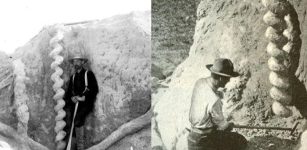 ‘Devil’s Corkscrews’: Extraordinary Giant Spirals Of Nebraska Rocky Mountains
Featured Stories | Apr 23, 2023
‘Devil’s Corkscrews’: Extraordinary Giant Spirals Of Nebraska Rocky Mountains
Featured Stories | Apr 23, 2023 -
 Earliest Evidence Of Evolutionary Trait That Enabled Dinosaurs To Become Giants – Brazilian Fossil Reveals
Evolution | Jun 21, 2023
Earliest Evidence Of Evolutionary Trait That Enabled Dinosaurs To Become Giants – Brazilian Fossil Reveals
Evolution | Jun 21, 2023 -
 Mysterious Ancient Ruins Of Fortress Discovered In Scottish Highlands
Archaeology | Jan 16, 2018
Mysterious Ancient Ruins Of Fortress Discovered In Scottish Highlands
Archaeology | Jan 16, 2018 -
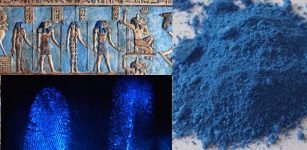 Ancient Egyptian Blue Powder Makes Fingerprints Glow And Will Be Used By Crime Scene Investigators
Ancient Technology | Jun 15, 2017
Ancient Egyptian Blue Powder Makes Fingerprints Glow And Will Be Used By Crime Scene Investigators
Ancient Technology | Jun 15, 2017 -
 Mystery Of The Lost Beverina Castle – Did Knights Templar Know Where It Was?
Featured Stories | Jan 21, 2018
Mystery Of The Lost Beverina Castle – Did Knights Templar Know Where It Was?
Featured Stories | Jan 21, 2018 -
 Salzburg Catacombs: Early Christian Place For Secret Gatherings And Hiding From Persecution
Featured Stories | Mar 16, 2016
Salzburg Catacombs: Early Christian Place For Secret Gatherings And Hiding From Persecution
Featured Stories | Mar 16, 2016 -
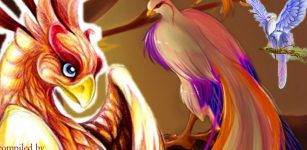 Mythical Beautiful Adarna Bird And Its Harmful Magical Power In Mythology Of Philippines
Myths & Legends | Jan 25, 2017
Mythical Beautiful Adarna Bird And Its Harmful Magical Power In Mythology Of Philippines
Myths & Legends | Jan 25, 2017 -
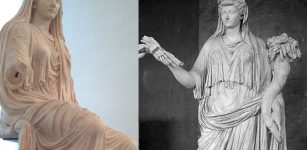 World’s First Diva Was Livia – Wife Of Emperor Augustus
Ancient History Facts | Aug 2, 2016
World’s First Diva Was Livia – Wife Of Emperor Augustus
Ancient History Facts | Aug 2, 2016 -
 Unusual 2,500-Year-Old Face Urns Reveal Garments, Appearance And Jewelry Of Prehistoric People
Archaeology | Nov 11, 2017
Unusual 2,500-Year-Old Face Urns Reveal Garments, Appearance And Jewelry Of Prehistoric People
Archaeology | Nov 11, 2017 -
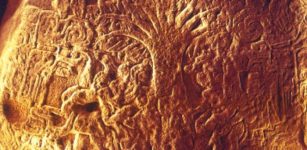 Ceiba Tree: Sacred Tree Of Life Of Maya People And Universal Concept In Ancient Beliefs
Celtic Mythology | Jun 12, 2017
Ceiba Tree: Sacred Tree Of Life Of Maya People And Universal Concept In Ancient Beliefs
Celtic Mythology | Jun 12, 2017 -
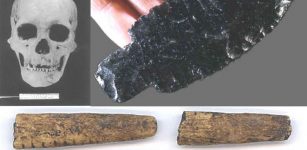 Buhl Woman Of Idaho: One Of The Oldest Skeletons In North America
Civilizations | Jun 3, 2023
Buhl Woman Of Idaho: One Of The Oldest Skeletons In North America
Civilizations | Jun 3, 2023 -
 Unique Life-Sized Camel Carvings In Northern Arabia Are Much Older Than Previously Thought
Archaeology | Sep 15, 2021
Unique Life-Sized Camel Carvings In Northern Arabia Are Much Older Than Previously Thought
Archaeology | Sep 15, 2021
